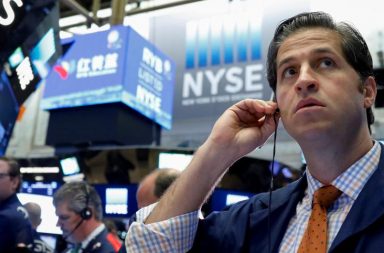On Monday, U.S. stock index futures tried to rally after the worst week on Wall Street in two years as futures increased just over 1 percent. Volatility remained relatively high and U.S. bond yields reached new four-year highs.
By 6:50 a.m., Dow e-minis were up 267 points, S&P 500 e-minis were up 26.5 points and Nasdaq 100 e-minis were up 62.5 points.
On Friday, the benchmark S&P 500 index closed 1.5 percent higher, but it was 9 percent lower than its all-time high as investors were cornered that rising inflation would prompt the Fed to hike up interest rates faster than expected.
Wall Street’s “gauge of fear”, or the CBOE Volatility index, opened at 27.25 which was lower than Friday’s close, but double its 50-day moving average. U.S. 10-year Treasury yields reached new four-year high at 2.902.
Though U.S. stocks as well as global markets attempted to rebound, their recovery depends on their ability to endure another spike in bond yields. There will be two significant readings this week regarding U.S inflation.
January’s U.S. consumer price index is due Wednesday and the producer price index is due Thursday. If the Labor Department’s reports come in higher than anticipated, this could stimulate stocks to decline further. December’s U.S. consumer prices increased by 2.1 percent year-on-year and is predicted to remain around the same pace.

THE MORNING REPORT
Start your workday the right way with the news that matters most.
Your information is 100% secure with us and will never be shared Disclaimer & Privacy Policy
On Monday afternoon, President Donald Trump will release his second budget pursuing his vow to boost military spending and funds for infrastructure, a wall to be constructed on the Mexican border as well as opioid treatment programs. The infrastructure and tax plans have been the main influences for the market’s continuous gains since Trump was elected. The most recent budget plan will contain $200 billion for infrastructure spending and over $23 billion for border security.
For quite some time equities have looked appealing compared to the low yields offered by bonds, but the increase in Treasury yields has reduced stocks’ attraction.
Because of this and the reversal of bets on low volatility, Wall Street’s three major indexes moved into correction territory last week. The indexes saw a 10 percent decline from record highs reached on January 26. Since the newly reached record highs, the S&P 500 dropped $2.49 trillion in market value through last Thursday, according to S&P Dow Jones Indices.
 D. Marie
D. Marie 




